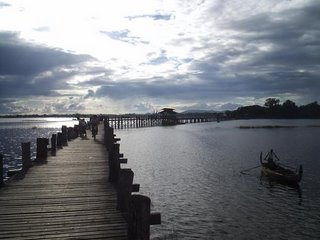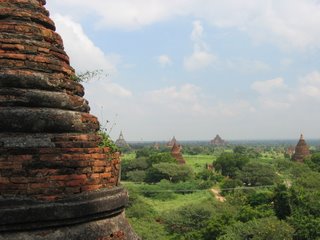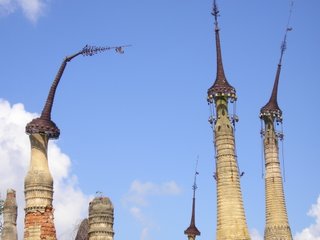Where is Mr. Jim?

Everyone and their uncle seems to have a Thai girlfriend. Actually, everyone and their grandfather or great-grandfather is more accurate. It's sad to see young women with old, old guys in such high numbers. Also, not all the women are all that hot. Sometimes I don't know whether to feel sorry for the geriatric farang or the gold-digger Thai.
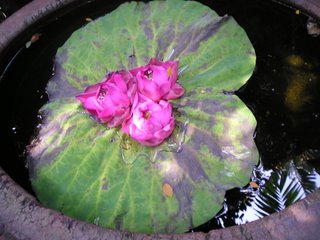
Speaking of old white guys, I went to the Jim Thompson House in Bangkok. It's a must see for anyone interested in architecture and interior design. Jim Thompson settled in Bangkok after WW2 and single handely revived the Thai silk industry by promoting it to the west. His silk empire gained him international renown throughout the fashion world. Our tour guide was quite proud to announce that all the costumes in The King and I were made with his silks.
He was an architect and assembled his home of six traditional teak structures from throughout the country. The buildings are simple and elegant, elevated a full story above the ground with solid wood interiors, interconnected by a wooden corridor. No photography inside the house was allowed so the shots of the flowers and the lotus are all I have of this place.
Mr. Thompson disappeared in the Cameron Highlands of Malaysia in 1967. No one knows what happened to him but the tour guide speculated with a smile that most likely he was eaten by tigers.

Stitching the Wound by contemporary artist Arahmiani was on display at the Thompson house. The exhibit was entirely created of silks. The show focuses on Muslim issues as a basis for a broader exploration of marginalization, identity and communication. Yes, I got that from the flyer handed to me at the door.
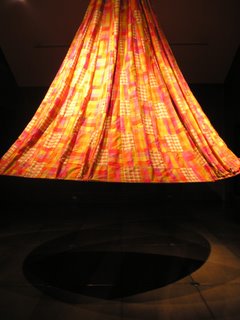
Like fake gucci glasses, art doesn't seem to be in short supply in Bangkok. On the way to the Thompson house I came across an exhibit in a large warehouse.

Some of the paintings on the wall were rather amateur like but the installations made good use of the space.

Later in the night I stopped by the Patpong night market after a yummy sushi dinner. I missed the raw fish. Patpong is also the red like district. Lots of beautiful half-naked women and transvestites that looked almost like real women. Lots of fake things at very inflated prices as well. I am now sporting some very fake $5 D&G sunglasses.

It was an endless day of wonders. I returned to the backpacker haven to discover that the Shell station between Rambrutri and Khao San Road had magically been transformed into a cozy outdoor bar complete with candle light. Next to it, in the parking lot, massage tables had been set up and I promptly got myself a facial for seven bucks at 11:30pm.

The Shell station is in full operation again this morning. I am off to Chaiya in the south for some meditation. This time I'll be all zen for ten days for sure.








